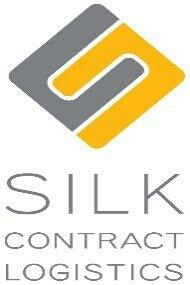Information
-
Document No.
-
Task to be assessed
-
Name of Site
-
Conducted on
-
Prepared by
-
Site Address
-
Personnel Involved
What are the potential Manual Handling hazards associated with a task
-
Step 1a – Does the task involve repetitive or sustained postures, movements or forces?
Tick yes if the task requires any of the following actions to be done more than twice a minute or for more than 30 seconds at a time -
Bending the back forwards or sideways more than 20 degrees
-
Twisting the back more than 20 degrees
-
Backward bending of the back more than 5 degrees
-
Bending the head forwards or sideways more than 20 degrees
-
Twisting the neck more than 20 degrees
-
Bending the head backwards more than 5 degrees
-
Working with one or both hands above shoulder height
-
Reaching forwards or sideways more than 30 cm from the body
-
Reaching behind the body
-
Squatting, kneeling, crawling, lying, semi-lying or jumping
-
Standing with most of the body’s weight on one leg
-
Twisting, turning, grabbing, picking or wringing actions with the fingers, hands or arms
-
Working with the fingers close together or wide apart
-
<br>Very fast movements
-
Excessive bending of the wrist
-
Lifting or lowering
-
Carrying with one hand or one side of the body
-
Exerting force with one hand or one side of the body
-
Pushing, pulling or dragging
-
Gripping with the fingers pinched together or held wide apart
-
Exerting force while in an awkward posture
-
Holding, supporting or restraining any object, person, animal or tool
-
Step 1b – Does the task involve long duration?
Tick yes if the task is done for either of the following durations -
More than 2 hours over a whole shift
-
Continually for more than 30 minutes at a time
Contributing Factors
-
Lifting, lowering or carrying heavy loads
-
Applying uneven, fast or jerky forces during lifting, carrying, pushing or pulling
-
Applying sudden or unexpected forces
-
Pushing or pulling objects that are hard to move or to<br>stop
-
Using a finger-grip, a pinch-grip or an open-handed grip to handle a heavy or large load
-
Exerting force at the limit of the grip span
-
Needing to use two hands to operate a tool designed for one hand
-
Throwing or catching
-
Hitting or kicking
-
Holding, supporting or restraining a person, animal or heavy object
-
Jumping while holding a load
-
Exerting force with the non-preferred hand
-
Two or more people need to be assigned to handle a heavy or bulky load<br>
-
Exerting high force while in an awkward posture
-
Driving for long periods
-
Driving on rough roads
-
Frequent use of hand held power tools
-
Using high grip force or awkward postures when using power tools
-
Use of machinery where the manufacturer warns of vibration
-
Workers being jolted or continuously shaken
-
Use of a vehicle or tool not suitable to the environment or task
-
High temperatures
-
Radiant heat
-
High humidity
-
Low temperatures
-
Wearing protective clothing while working in hot conditions
-
Wearing thick clothing while working in cold conditions (e.g. gloves)
-
Handling very cold or frozen objects
-
Uneven or slippery surfaces
-
Employees are working in hot conditions and are not used to it














